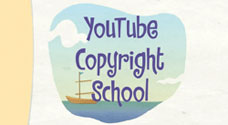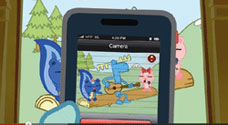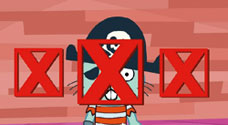
Understanding Copyright - A Life Skill
By Lesley Ellen Harris *
“It’s one of those life skills now, right? When you graduate from high school or college, you should know how to read a map, you should know how to use GPS, you should know a little bit about copyright. If you are somebody who is going to be in a field where you will encounter copyrighted materials all the time, you should know more. If you’re going to be an artist or musician and you’re getting a red-hot degree in the performing arts, you should know a lot. And I don’t think that’s quite the case - I don’t think it’s been built into the curricula.”
- Maria Pallante, U.S. Register for Copyright
Once the preserve of specialists, copyright has become a mainstream issue, and understanding how it works is an increasingly necessary life skill. In the online world, consumers come face to face with copyright law, but many remain confused and unsure about what they may or may not legally do. The growing number of law schools that offer courses on intellectual property (IP) are helping to fill gaps in copyright knowledge, but there is still a great deal to be done to bring the public up to speed on copyright issues.
With widely available technologies that make it easy to download and copy creative content, and amid escalating rates of online piracy, there is growing interest in copyright education. This means teaching consumers of creative content about the full implications of illegal copying as well as how to avoid infringing creators’ rights and interests. It is about underlining the fact that although the way we listen to music, watch movies and read books has changed dramatically, the time, effort and skill involved in producing creative content remains more or less unchanged. Copyright education offers a steady and sure means of building understanding and respect for creators’ rights.
 |
 |
 |
| The central message of Australia’s Intellectual Property Awareness Foundation’s 2011 Campaign is “Whoever you are… There’s no excuse for Movie and TV theft.” (Photos: IPAF) |
||
Schooling accidental pirates
Research undertaken by Australia’s Intellectual Property Awareness Foundation (IPAF) in 2011 reveals a high level of confusion among the general public about what constitutes piracy. Many are “blissfully unaware” that by downloading, burning or sharing movies or TV programs they are fuelling piracy. IPAF estimates that as many as one in three Australians are “accidental pirates”. It firmly believes that education is “the solution to a better understanding of the movie and TV theft issue”. Through its public education campaigns, IPAF explains what piracy is, the harm it causes and why members of the public should stop downloading, copying and buying pirated movies and TV programs.
A growing number of other campaigns and information resources seek to educate the public about the dos and don’ts of copyright. In November 2011, US Attorney General Eric Holder announced the launch of a public education campaign to explain the negative consequences of buying counterfeit products and downloading pirated content. Video-sharing site YouTube hosts hundreds of professionally crafted educational videos on copyright and has its own Copyright Education Center offering guidance on copyright questions. Violators – those having received three uncontested infringement notifications – are sent to YouTube’s “Copyright School” where they have to watch a copyright tutorial and pass a test before being allowed to continue to use the service. The WIPO Academy also offers a choice of courses on copyright – and IP in general – for diverse audiences and many other organizations, such as the Special Library Association, an international association representing information professionals, provide non-specialists with the knowledge they need to avoid infringing the rights of creators.
Why Educate?
Beyond nurturing creativity and its broad diffusion, which lie at the heart of copyright, there are a number of compelling reasons to support copyright education programs in public libraries, schools, businesses and academia. First and foremost, a high level of copyright awareness makes it possible to avoid legal challenges, and when they arise, to better respond to them. As such, it can support cost-effective risk management.
Aside from legal and financial considerations, companies and organizations seek to boost copyright awareness for a range of other reasons. In leading by example, an organization can enhance its reputation by serving as a role model for maintaining high copyright standards and complying with the law. Copyright awareness also opens the door to greater creativity and productivity in the workplace. Employees, for example, can feel confused when using licensed databases or content in social networking environments. A better understanding of copyright can minimize concerns about fair use and fair dealing, and can increase employee confidence and output. Managers too need to be copyright-aware given the widespread use and licensing of online content in day-to-day operations.
From an organizational point of view, the implementation of copyright policies and training programs offers a number of additional advantages. For example, the Digital Millennium Copyright Act (DMCA) in the United States limits the liability of Internet service providers (ISPs) for certain infringements if they implement a policy for repeat infringers and inform subscribers about their approach to copyright infringement. Under the Technology, Education and Copyright Harmonization (TEACH) Act, which clarifies permissible use of copyright-protected works for distance education, educational institutions must "institute policies regarding copyright" to qualify for copyright exceptions provided for by the Act. In a 2004 case - CCH Canadian Ltd. v. Law Society of Upper Canada - the Supreme Court of Canada submitted that having a written policy on copyright helps ensure the application of fair dealing in a particular situation.
Who needs educating?
Copyright education targets a broad range of audiences including schoolchildren, college students, graphic designers, IT professionals, and librarians. Those who work in copyright-based industries - such as music, filmmaking, and publishing - also need to be kept up to date on developments in copyright law, especially when it comes to how the law applies to the newest technologies and modes of digital distribution and access.
Many people have some knowledge of copyright law and the fact that it puts a limit on how we may use content. Many of us are also aware that the use of licensed content is subject to the terms and conditions of a license agreement. We often face situations in which we think fair use or fair dealing may apply to the use of copyrighted material, but need reassurance that it in fact does.
Understanding the parameters of the legal use of copyright-protected content - including in relation to reprography and collective and other licenses - makes everyone’s job easier. Placing a poster on copyright near a photocopying machine, printer, or computer with Internet access can be helpful, but specific, well-targeted copyright education can provide the know-how that instills confidence in users of copyright-protected materials.
 |
 |
 |
 |
 |
 |
| Individuals receiving three uncontested infringement notices are sent to YouTube’s Copyright School where they have to watch a copyright tutorial and pass a test before being allowed to continue to use the service. (Photos: YouTube, LLC) |
||
What does copyright education involve?
The elements of an effective copyright education program are best defined in relation to the needs of each target audience. Generally speaking, such a program both imparts copyright knowledge and establishes a mechanism that enables users to find answers easily to their day-to-day copyright-related questions. It includes an explanation of the basics of copyright law, the application of fair use or fair dealing exceptions, and an overview of international copyright law issues (especially how they relate to digital and online content). It also involves practical advice on how to be copyright compliant - when using content in online courses, for example, or in social networking sites - and on where to obtain additional copyright information, if required. In sum, copyright education requires active copyright management and a proactive attitude towards copyright compliance.
Creating a copyright education program: simple steps
Drawing in your audience
Often those who stand to benefit most from copyright education are the last to seek it out. Explaining the benefits of legal compliance is helpful but may not be enough to fully engage your audience. If you believe your company or organization needs to beef up copyright awareness, you may have to take the lead in setting up an internal copyright education program. This might even result in formal recognition of a new leadership role which itself could help convince others that copyright can lead to new work opportunities. Issuing a certificate to all those completing a copyright education course is yet another incentive.
Identifying program elements
To be effective, your copyright education program needs to address the copyright issues that arise most frequently. A good starting point is to send an email message to your target audience asking them to outline the copyright questions and situations they often encounter and are unsure about. Such issues can include:
- Photocopying articles for educational use (face-to-face or online courses);
- Posting content on a website, intranet or Facebook page;
- Undertaking a digitization project or scanning individual documents or images;
- Negotiating and interpreting digital license agreements for electronic periodicals;
- Using photographs in a research project or annual report; and
- Producing an educational video.
Audience
Effective copyright education programs should be tailored to the needs of each audience. For example, senior administrators may require information on the “bigger picture” (both with regard to content and budget approval), whereas librarians, researchers and marketing departments may need day-to-day practical solutions, and academics may need information on obtaining permission to use content in course materials. You will also need to consider how the education of the general public fits into your goals. Is it enough to post a copyright notice or poster on copyright restrictions near a photocopying machine, printer or Internet-enabled computer or should you make a pamphlet on copyright available to the public?
Taking stock
To avoid reinventing the wheel, it is useful to do an inventory of all your organization’s documents dealing with copyright-protected materials. These may include copyright policies, a permissions procedure, model or standard letters for obtaining copyright permission, a presentation on copyright, and a legal opinion on fair use/dealing or a related subject. These documents are an excellent starting point for examining your organization’s current approach to copyright-protected materials.
Budget/approval
If copyright education is new to your organization, it is important to identify which departments can contribute to and support the initiative. When it comes to securing funding, it may help to highlight the potential cost-savings associated with the program. You will also need to work out how to obtain approval for rolling out the program across the organization.
Timing
Identifying an opportune moment to launch a copyright education program can be a key factor in its success; for example, in the event a copyright lawsuit affects your organization’s copyright practice. Timing is all-important and will directly influence organizational buy-in for the program.
_______________________
Ms. Harris is a copyright lawyer, author and educator. She publishes The Copyright & New Media Law Newsletter and maintains a blog with copyright answers. Her book, Licensing Digital Content: A Practical Guide for Librarians, Second Edition, is available from ALA Editions.
The WIPO Magazine is intended to help broaden public understanding of intellectual property and of WIPO’s work, and is not an official document of WIPO. The designations employed and the presentation of material throughout this publication do not imply the expression of any opinion whatsoever on the part of WIPO concerning the legal status of any country, territory or area or of its authorities, or concerning the delimitation of its frontiers or boundaries. This publication is not intended to reflect the views of the Member States or the WIPO Secretariat. The mention of specific companies or products of manufacturers does not imply that they are endorsed or recommended by WIPO in preference to others of a similar nature that are not mentioned.